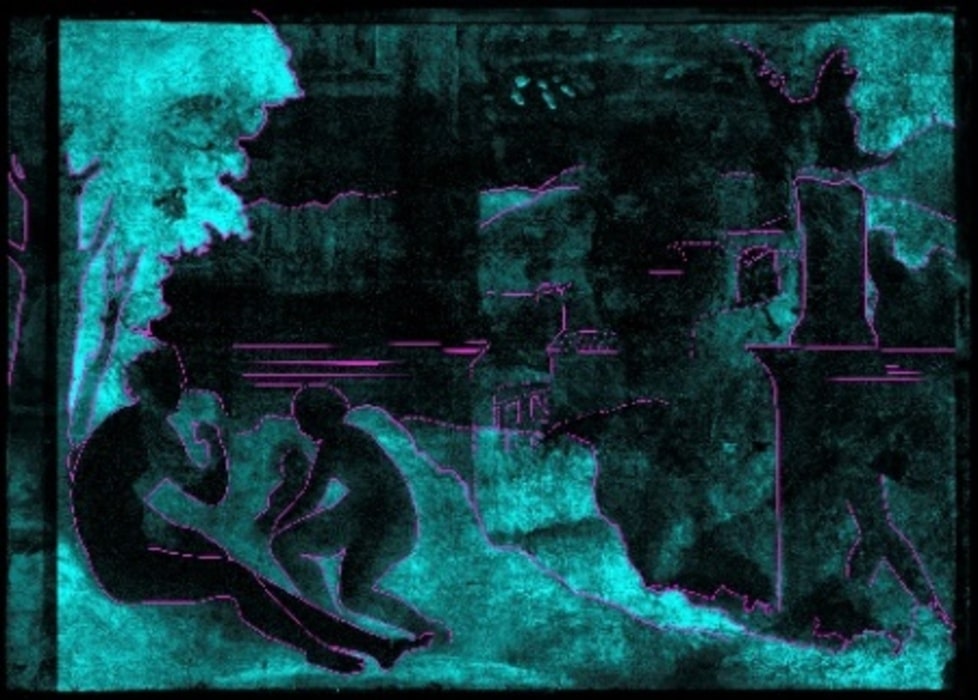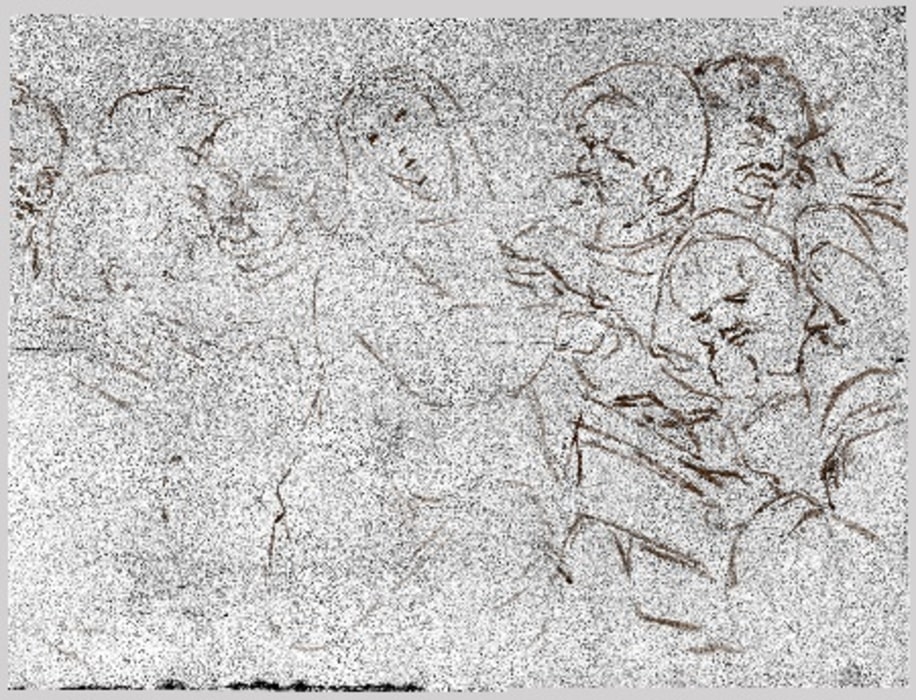An interdisciplinary research team from the Alte Pinakothek and the Doerner Institute in Munich has made a spectacular discovery. As part of a research project into Venetian Renaissance painting in the holdings of the Bavarian State Painting Collections, comprehensive art-historical and art-technological investigations have now underpinned the findings that will be presented in the exhibition “Venezia 500<<. The Gentle Revolution of Venetian Painting” (Alte Pinakothek, 27.10.2023-04.02. 2024): the enigmatic double portrait, which has been on display in the Green Gallery of the Munich Residence since 2011 and is now on permanent display in the Alte Pinakothek, is a creation by Giorgio da Castelfranco (1473/74-1510), known as Giorgione – one of the rare works by the exceptional talent who died young and revolutionized the art of painting in the Renaissance. The research findings, which are nothing less than a sensation for the art history of Italian Renaissance painting, are now being presented to the public in a freely accessible online publication.
Image above: Kartierung der übermalten Figurenzeichnung auf invertiertem Zink-Verteilungsbild, (Röntgenfluoreszenz-Scan der Gemälderückseite), © Anneliese Földes/Jens Wagner (Doerner Institut).
The famous artist biographer Giorgio Vasari saw the painting in 1568 in the palazzo of the Florentine banking family Borgherini and described it as a portrait of the young Giovanni Borgherini with his teacher from Venice. In fact, the portrayed humanist’s head corresponds to the traditional appearance of the Venetian polymath Trifone Gabriele, one of whose students Giovanni Borgherini was demonstrably a pupil. In the Munich portrait, the scholar, who was also identified by contemporary sources as a teacher of astronomy and cosmology, uses an astrolabe and compass to demonstrate how the heavens and earth can be measured, while the youthful Giovanni with his soft curls and dark eyes corresponds to the ideal of artistic and intellectual longing that characterized Venetian portrait culture in those years.

Technological investigations made it possible to determine the materials used by the artist, whose diversity reflects the wide range of Venetian paint dealers, and also brought to light a literally multi-layered creative process. Imaging and material analysis techniques, including above all macro X-ray fluorescence scans of the front and back of the painting, revealed three further compositions beneath the visible depiction: a brush drawing of the biblical scene of the twelve-year-old Jesus among the scribes, a landscape scene reminiscent of Giorgione’s famous Tempesta above it and, finally, the portrait of a sumptuously dressed figure whose garment probably came from the Nasrid Emirate of Granada. As cross-section samples show, all four compositions were created in immediate succession. The technological studies thus provide rare insights into the working methods of an uncompromisingly innovative artist. At the same time, the pictorial inventions testify to the joy of experimentation and ambition of the painter, who competed with Leonardo da Vinci and Albrecht Dürer with his virtuoso brushwork, sought a dialog with the poetic creations of his contemporaries with his painted fantasy of an Arcadian landscape and whose detailed eye for a fabric pattern from Moorish Spain reflects Venetian openness in cultural exchange with the Islamic world. Taken together, the findings result in a very strong chain of evidence, the probative force of which for the attribution to Giorgione is essentially supported by the discovery or reinterpretation of the sources that have survived on the provenance and collection history.

(Röntgenfluoreszenz-Scan der Gemälderückseite) © Anneliese Földes/Jens Wagner (Doerner Institut).
The results, thanks to which a further work by Giorgione can now be seen in the Alte Pinakothek alongside the Portrait of a Young Man (c. 1505/10), have now been published in detail and with all the art-technological images in the international open-access magazine ArtMatters: One Canvas, Four Ideas: A Double Portrait Attributed to Giorgione With Different Compositions Underneath | ArtMatters.
Art Minister Markus Blume emphasizes: “The discovery of a Giorgione in the Bavarian State Painting Collections is a true Christmas miracle! A Giorgione is not only spectacular for the Alte Pinakothek, but also a highlight for the international art world. I would like to thank the interdisciplinary team of scholars at the Alte Pinakothek and the Doerner Institut in Munich for making this discovery possible with their ingenuity, precise research work and state-of-the-art analytical technology.”

(Röntgenfluoreszenz-Scan der Gemäldevorderseite) © Anneliese Földes/Jens Wagner (Doerner Institut).
“Giorgione’s multi-layered double portrait brings together everything that characterized the cultural flowering of Venice in the early 16th century,” says Andreas Schumacher, Head of the Italian Painting Collection at the Alte Pinakothek. “The discovery of this masterpiece is due to the precision of two young scholars, Johanna Pawis and Anneliese Földes, whom we are able to employ thanks to generous funding for our project. The painting is of inestimable value, it is a spectacular stroke of luck for the Alte Pinakothek and a sensation for Italian art history. A Giorgione under the Christmas tree is more than a six in the lottery!”
“Our recipe for success is close interdisciplinary teamwork directly on the work of art, in a direct exchange between art history, restoration and natural sciences, on an equal footing and with the greatest possible permeability between the disciplines,” emphasizes Eva Ortner, Director of the Doerner Institute.
Bernhard Maaz, Director General of the Bavarian State Painting Collections, concludes: “By their very nature, museums are not only places of cultural education, mediation and communication. They are also research institutions. Their own collections are examined with the greatest care, which in this case was made possible by the generosity of many sponsors. My heartfelt thanks go to the German Research Foundation, the Ernst von Siemens Art Foundation and the Hubert Burda Foundation.”






